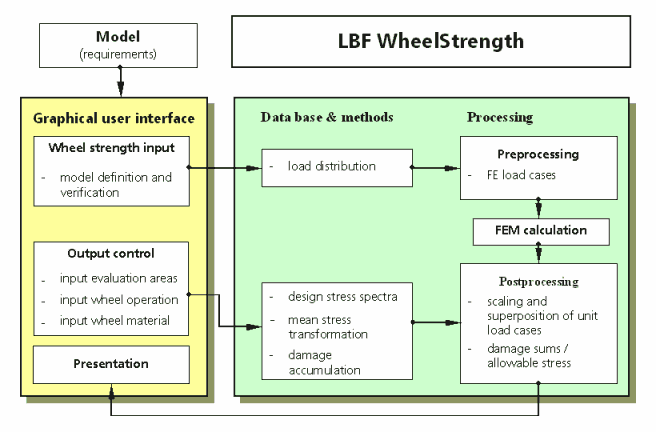
DEVELOPMENT OF THE FATIQUE STRENGTH EVALUATION SOFTWARE "LBF-WHEEL STRENGTH"
The idea for the software tool LBF-WheelStrength was developed during several projects in the LBF dealing with the fatigue life estimation of wheels and hubs. The software consequently transfers the experimental procedures developed by Grubisic to the numeric analysis taking advantage of the knowledge of the operational loading conditions during customer usage. In order to decrease the amount of costs for the stress calculation and the fatigue evaluation in many areas of the wheel a method for the automatic performance of the calculation has been developed. This aim is reached by a high user support in the pre- and postprocessing of a sophisticated calculation method which involves LBF experiences in measurement of tire deformations, measurement of loading spectra and experimental stress analyses.
An essential requirement for a software solution which is aimed to be used in today's CAE process is the possibility to attach LBF-WheelStrength to a commercial finite element program. This was realized by coupling the software to the Preprocessor PATRAN from MSC.
LBF-WheelStrength is attached to the finite element pre- and postprocessor (Fig. 1).

The introduction of the wheel forces is fixed through the user by picking one node for the vertical and lateral load on each rim flange (Fig. 2).
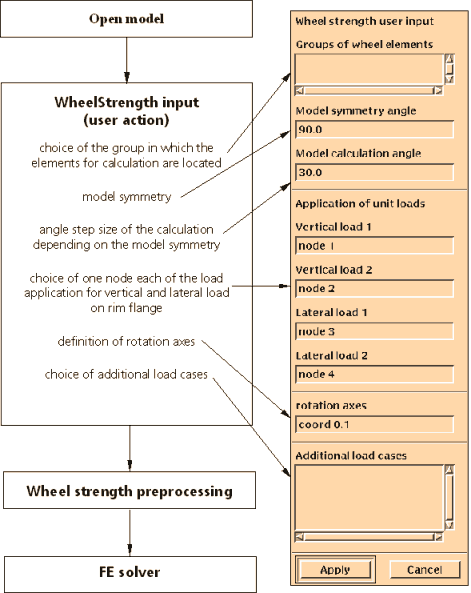
In the preprocessing the loads are applicated as unit loads with a distribution which was derived from measurements of the tire deformation. The load distribution on a circumferential line on the rim flange is calculated by WheelStrength (Fig. 3). The necessary finite element load cases for calculation are automatically generated by the program.
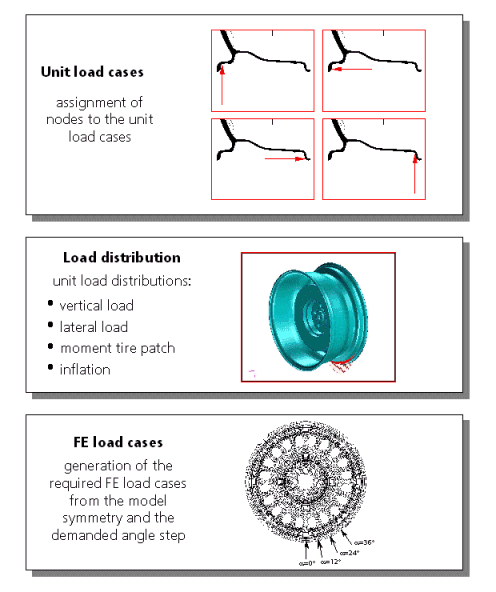
After the generation of all necessary FE load cases through WheelStrength the FE calculation is performed (Fig. 4).
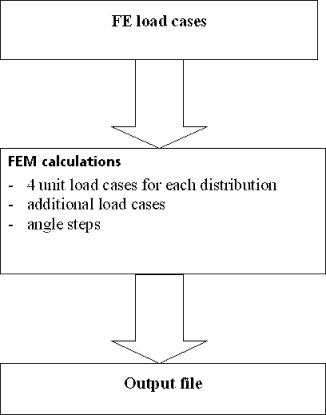
During the postprocessing the stress-time history during one wheel revolution is derived from the scaling and superpositioning of the unit load cases for each physical load case. The dynamic loads at the wheel caused by the dynamic behavior of the vehicle during operation are considered by load factors which were proposed by Grubisic and Fischer (Fig. 5). The load factors depend on the static wheel load, the tire stiffness and the vehicle type and are suggested during user input operation (Fig. 7).
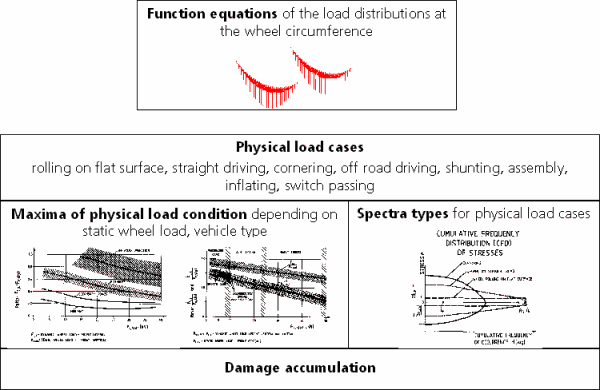
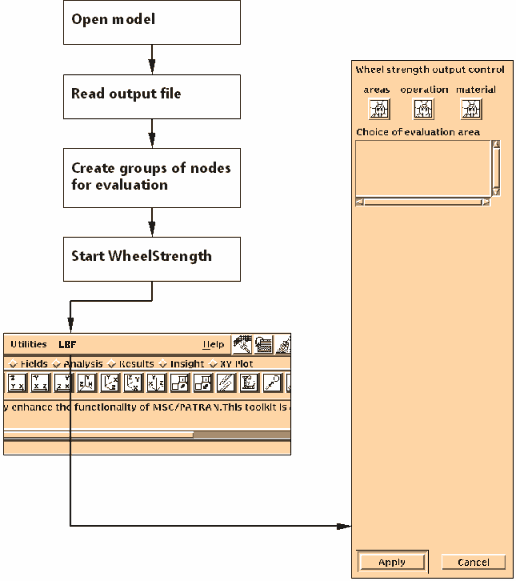
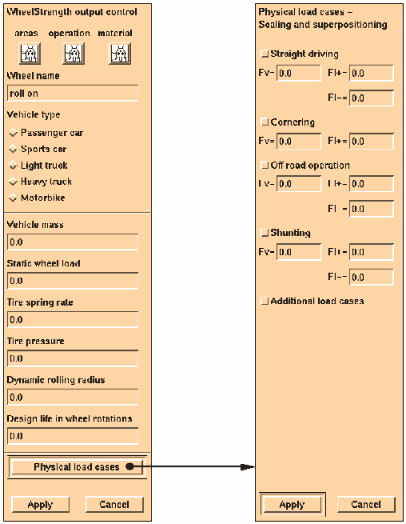
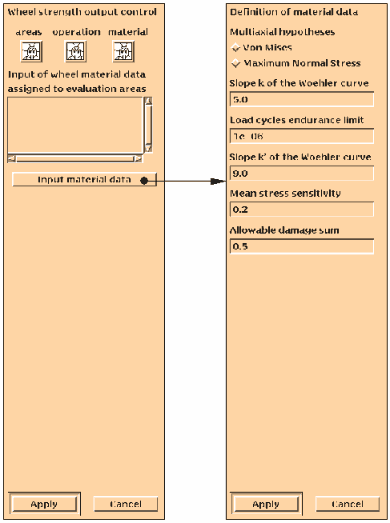
From the time history the amplitude and mean value of stresses in each selected evaluation area is calculated. Based on the user defined material data the amplitudes are transformed by the mean stress sensitivity (Fig. 8 and 9). The damage sum of each subspectrum and the required fatigue strength are determined in the evaluation areas (Fig. 10).
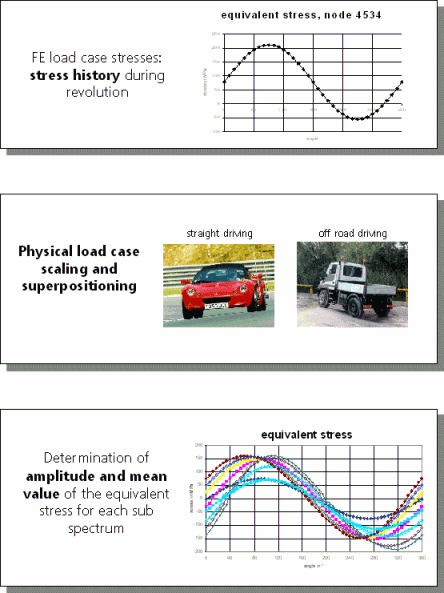
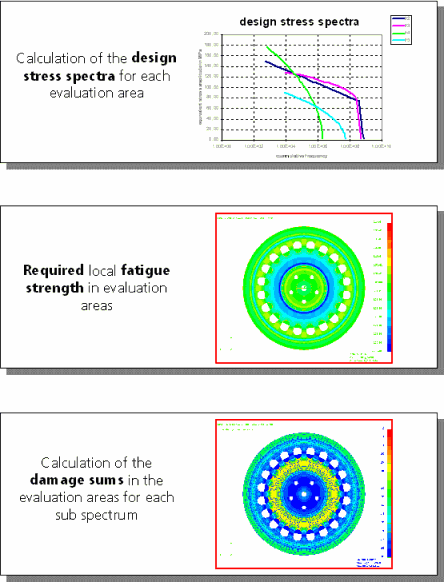
The developed tool decisively supports numeric stress analysis and strength evaluation of wheels and hubs since it effectively allows the simulation of the complex rolling conditions under actual service loads by having installed the data and methods used and approved by experimental stress analysis. It therefore is a strong tool to improve the reliability of numeric strength evaluation.